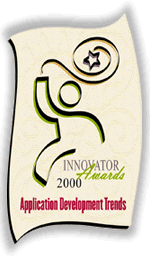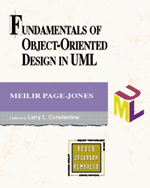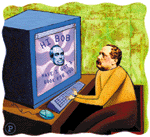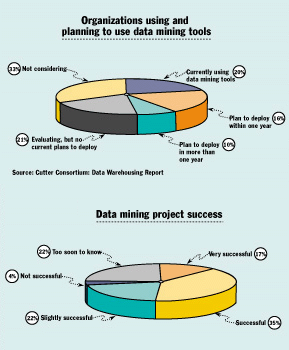
In our sixth annual Innovator Awards issue, we profile the winning entries and honorable mentions in the following categories: <ul>
<li>E-business Application Development
<li>Middleware/Application Integration
<li>Application Engineering
<li>Component-based Development
<li>Data Warehousing
<li>Extending Existing Systems</ul>
EAI has grown up mainly as a technology and process for integrating installed applications; now organizations are looking for tools that focus on business-to-business integration.
But development managers beware.
XML is already a key enablement technology for Web developers, and an investment now will pay off in spades down the road.

Maturing UML packages extend modeling notations for developing applications with advanced systems architectures and GUIs.

Several design patterns are defined to make systems more flexible and extensible. The main goal of this work is to show how the representation of these kind of patterns, which we refer to as configuration design patterns, can be vastly improved through extensions to the diagrams used to model them. An extension to the UML design notation to better represent configuration patterns is proposed and illustrated through examples of well-known design patterns and real-world frameworks. The article also shows that the proposed representation can be more easily mapped to new implementation techniques such as Aspect-Oriented Programming and Subject-Oriented Programming.
Use cases have proved to be effective in many areas of software development, including requirements gathering, object identification, test case generation, and user manual documentation. A new application of use cases is presented here: the verification of software specifications, prior to implementation. Use-case trees show a new view of the system and, constructed from the state-transition models of object-oriented specifications, can be used to verify the system specification for correctness. Paths from the root of the tree to leaf nodes correspond to use-case scenarios, and there should be no more paths in the tree than there are scenarios.
The use-case tree has another useful function in that it provides a new "global" view of a system. This is similar to a flowchart, which can prove to be useful for project managers, users, etc. who may require an overall picture of the system and rapid knowledge of the various paths the system can take.
Finally, the use-case tree could be incorporated quite comfortably into the Unified Modeling Language (UML) as it is based on existing formalisms (use cases and state transition models).
Analysis and design have increased in both importance and complexity as a result of the Internet revolution.
Leveraging the borderless nature of the Internet, overseas developers have found that it is a small world after all.
Component frameworks can improve the quality of deployed applications, speed development and reduce development costs—reasons that make considering the use of frameworks too logical to ignore.
Veteran ERP giants see gold in the ASP business. While IT units can cut hardware and personnel costs aplenty, the ASP model inhibits customization and raises security fears.
With: I've walked a mile in your shoes ...
Diploma in hand, and ready to get down to business, XML has quickly found its niche in business computing.

Personalization promises to teach corporations all they want to learn about customers. But the fervor for such tools may diminish unless standards and ethical concerns are faced.<br>
With: The language of personalization<br>
With: A closer look at the personalization space

New tools, techniques let IT more quickly and cheaply sift through critical data, while significantly improving the quality of the analysis.<br>With: Data mining tools
With: Coming of age<br>
With: The data mining lexicon<br>
With: Text mining<br>
With: Data mining books
IT must ensure ASP strengths match their needs, and be confident that the supplier can sustain a long-term relationship.<br>
With: Put your ASP under the microscope<br>
With: Growing your own ASP<br>
With: Nothing fishy here
Open source software is driving new IT business and development models; access to source code provides users with control of their own destiny.<br>
With: Turning a business around with open source<br>
With: A sampling of open source software
Meta data "repositories" are slow to catch on, but XML and other technologies promise to help overcome obstacles; emerging integrated meta data management systems promise to better link corporate islands of information.
Essential questions to be answered before going ahead with a data warehouse project.
IT scrambles to get corporate data onto wireless devices; experts list assorted paths for different objectives.
With: Wireless tools and services
With: What to remember
Components have long been touted as a means to distributed computing. Enterprise JavaBean servers may move that dream closer to reality, some users suggest. Scalability and portability are big pluses.